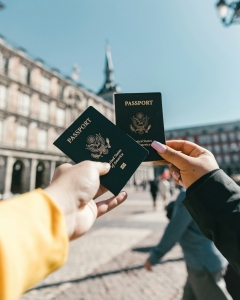Travel is exciting, but it can be full of sensory surprises that cause overwhelm, especially for neurodivergent travelers. In my own experiences I have learned the importance of preparation and having a reliable plan.
A little bit of forethought can make a world of difference between a trip that is memorable for the right reasons and one people would rather forget. Today I am sharing my most helpful sensory smart tips that can help families, solo travelers, and anyone with sensory challenges.
Plan for Comfort From the Start
Even the best laid plans can unravel if your physical needs go unmet. Here are three practical moves that set the stage for calm travel.
- Book quieter lodging. Noise can be an invisible stressor. Ask for a room away from elevators or ice machines. Some hotels will even put you on a top floor so you do not hear people above you. It is a good habit to make special requests at booking and then again at check-in.
- Pack a sensory kit. This kit is my travel must-have. Include noise canceling headphones, sunglasses, a fidget toy, and favorite snacks. A weighted lap pad or a familiar soft jacket can make airplane seats much more tolerable.
- Rehearse new environments. I find street views on map apps helpful. You can also look at hotel or airport pictures online. If possible, visit new places virtually or in person before the real trip. This creates a memory in the brain, so it is not a totally new and possibly frightening experience.
Take Advantage of Smart Supports
Use Airport Assistance
Most airports offer programs to help people with sensory challenges. Let the airline know about your needs in advance.
There are quiet rooms, sensory spaces, and pre-boarding options.
Do not be afraid to ask for help at check-in counters. Staff can walk you through security or direct you to less crowded waiting areas.
Build Recovery Time Into the Itinerary
Downtime is just as important as sightseeing. After a busy museum or park day, schedule a quiet morning.
Bring books, headphones, or even a portable fan to create a calming break in the middle of stimulation. Everyone, no matter their sensory needs, benefits from time to recover.
Responding to Escalation in the Moment
It is smart to plan, but we also have to expect surprises. Here is how I manage when things get overwhelming.
Spotting Early Signs
Every person has signs that sensory overload might be coming.
For me, I feel my skin getting tight and my hands start to flap or tap. Parents may see increased stimming or trouble with loud noises.
Noticing these signs early allows you to act before a meltdown.
Meltdown Kits and Responses
Having a travel friendly meltdown kit is helpful. Include things like a favorite comfort item, earplugs, or a calming scent. Portable weighted items or chewable jewelry can make a big difference.
It is good to have a response plan, too. If possible, move to a quiet place. Use phrases or cards that show you need a break.
For more ideas on handling in-the-moment challenges, you can see how autismparentingmagazine.com explains meltdown strategies.
The Science, Simply Put
Brains that process information differently need predictability. The science shows that the autistic brain does not filter out background noise as easily.
Sudden changes, bright lights, or new smells can be overwhelming. Pre-planning helps the brain feel safe because it knows what to expect.
In Practice
- Family vacations: A sensory kit keeps young kids and teens calm during airport waits, on trains, or in new restaurants.
- Business trips: Adults benefit from digital itinerary checklists and hotel rooms with blackout curtains for restful sleep.
- Solo adventures: Quiet time and scheduled sensory breaks help keep energy levels steady. Using apps to preview activities can make exploring new places much smoother.
You can travel calmly and enjoy new adventures with the right sensory smart approach. The world gets bigger when you set yourself up for sensory comfort.
Smoother Journeys Ahead
Planning for sensory needs transforms travel from stressful to satisfying.
Small adjustments make a big difference. Embrace these sensory smart strategies and watch every trip become smoother, calmer, and more enjoyable for everyone involved.
Safe travels!






